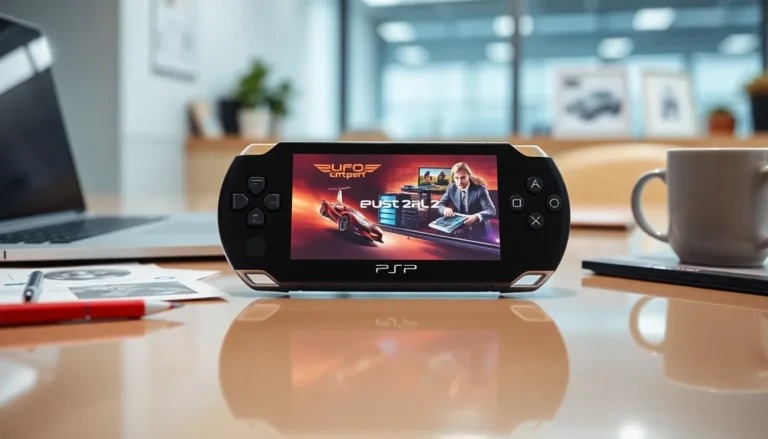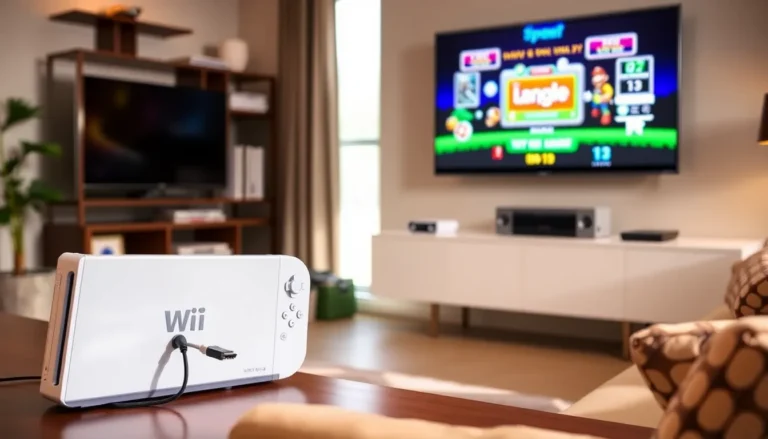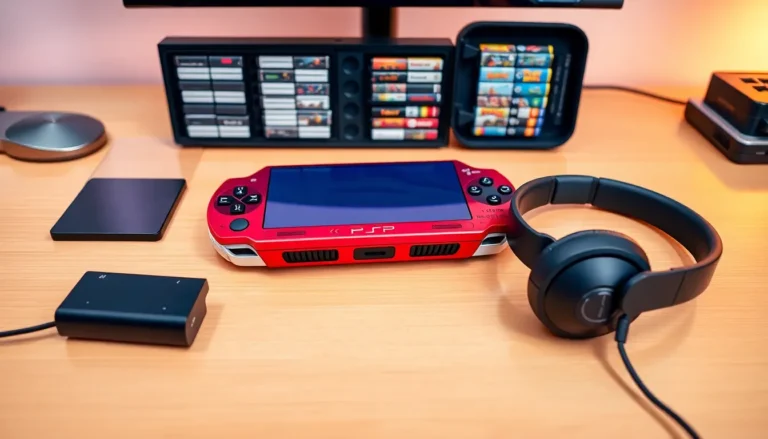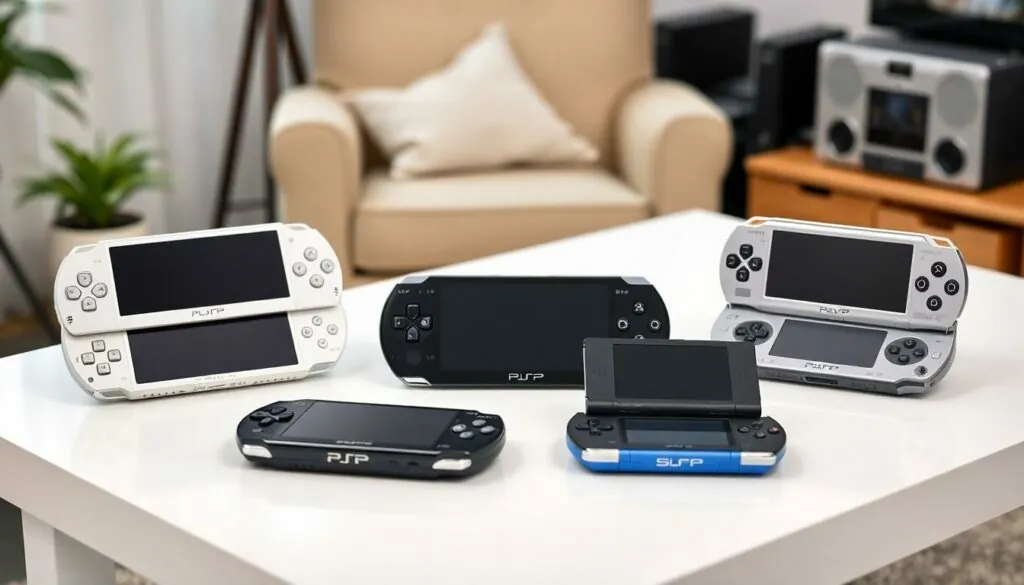Table of Contents
ToggleIn the ever-evolving world of technology, understanding the differences between PSP models can feel like deciphering a secret code. With each iteration boasting new features and improvements, it’s easy to get lost in the alphabet soup of specifications. But fear not! Whether you’re a seasoned gamer or just curious about the latest gadgets, breaking down these differences can be as enlightening as finding the last piece of pizza at a party.
Imagine trying to choose between a sleek sports car and a trusty family sedan—both have their perks, but they serve different purposes. Similarly, each PSP model has its unique flair and functionality. Join the journey as we unravel the quirks and qualities that set these models apart, helping you make an informed choice while keeping a smile on your face. After all, who said tech talk couldn’t be fun?
Overview of PSP Models
Multiple models of the PlayStation Portable exist, each designed for specific gaming experiences. The original PSP, released in 2004, introduced gamers to portable gaming with a 4.3-inch LCD screen and quick loading times through UMD discs. Programmers optimized games for this model, making it a popular choice for many.
In 2007, Sony launched the PSP Slim & Lite, which featured a lighter design and extended battery life. The enhancements attracted users seeking portability without sacrificing performance. Improvements in processing power and graphics capabilities became appealing factors for both casual and hardcore gamers.
The PSP Go, unveiled in 2009, represented a shift in focus by eliminating physical media. Users accessed games digitally through the PlayStation Network, benefiting from a sleek, slide-up design. This model appealed to gamers wanting convenience and a compact form factor.
Finally, the PSP Street emerged in 2011, designed for budget-conscious consumers wanting a basic gaming experience. It provided essential gaming features without the bells and whistles of earlier models. Users looking for an affordable entry point found it a suitable option.
Overall, each PSP model caters to specific preferences and needs in the gaming community. Understanding these differentiations helps consumers make informed choices aligned with their gaming habits and preferences.
Key PSP Model Differences
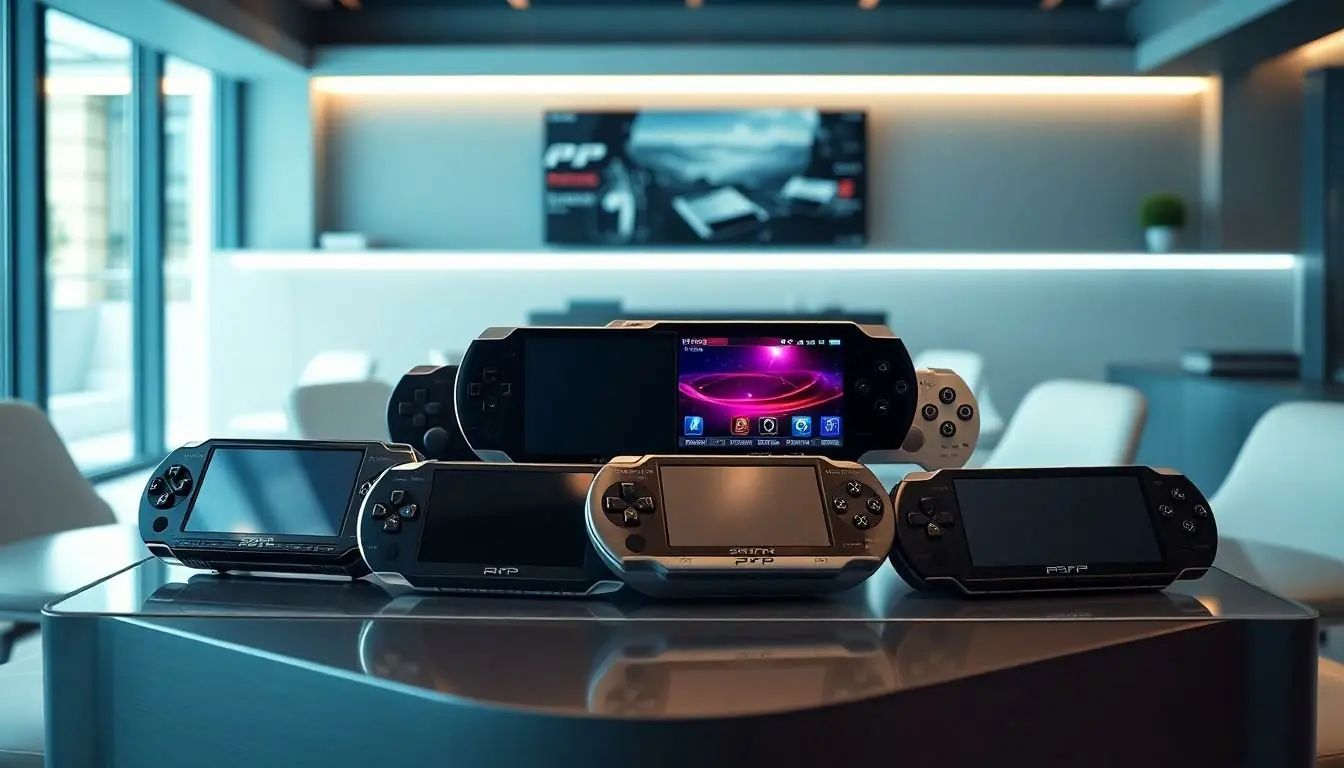
Understanding the differences between PSP models simplifies the decision-making process for gamers. Distinct structural and functional variations set each model apart.
Structural Differences
Original PSPs feature a robust design, emphasizing durability. In contrast, the PSP Slim & Lite offers a lightweight structure, making it easier to carry. The PSP Go introduces a compact, slider design that prioritizes portability. With the PSP Street, cost-saving measures lead to a more basic build but retain essential elements for gameplay. Overall, the structures reflect the evolution in design trends, balancing portability and sturdiness across the models.
Functional Differences
Gaming performance varies across PSP models, impacting user experience. The original PSP uses UMD discs, providing a blend of physical and digital content. Meanwhile, the PSP Slim & Lite enhances battery life, ensuring longer gaming sessions. Digital gameplay becomes the focus with the PSP Go, eliminating physical media for streamlined access. The PSP Street delivers core gaming features at a reduced price, aiming for accessibility. These functional characteristics highlight the intentions behind each model, catering to different gaming preferences.
Importance of Understanding PSP Model Differences
Recognizing PSP model differences aids consumers in making informed purchasing decisions. Each model offers unique features tailored to specific gaming preferences. The original PSP, released in 2004, introduced essential elements, such as its 4.3-inch LCD screen and UMD disc drive. It’s crucial to note that the PSP Slim & Lite, launched in 2007, optimized user experience by reducing weight and enhancing battery life. Users seeking portability paired with performance find this model particularly appealing.
Emphasis shifts with the introduction of the PSP Go in 2009, which eliminated physical media to embrace digital gaming. This change enhances convenience and streamlines the gaming experience for those prioritizing digital download over physical copies. Contrast this with the 2011 PSP Street, designed to meet the needs of budget-conscious gamers. Its essential gameplay features come at a lower cost without sacrificing usability.
Understanding these differences can impact gaming habits. Structured distinctions, such as durability in the original PSP versus the lightweight focus of the Slim & Lite, highlight varied consumer needs. A comprehensive grasp of these models supports gamers in aligning their purchases with personal interests. Functional aspects also differ significantly. For instance, the original PSP combines physical and digital content, while the Go prioritizes a completely digital library.
By appreciating the nuances among PSP models, consumers streamline their options. Understanding features like battery life, design, and media type ultimately informs gaming choices. Each model caters to distinct preferences, enhancing user experience and satisfaction among gamers.
Use Cases for Different PSP Models
The original PSP, released in 2004, suits gamers seeking a versatile device. It mixes physical and digital content with UMD discs, making it ideal for those who want a broad gaming library. Users appreciate the durability of this model during extended play sessions.
Comparatively, the PSP Slim & Lite appeals to individuals who prioritize portability. Its lightweight design and improved battery life enable longer gaming on the go. This model serves well for commuters or those who prefer gaming while traveling.
The PSP Go, launched in 2009, targets users who embrace digital gaming. Removing physical media increases convenience, especially for gamers who prefer downloading titles directly. The sleek design attracts a tech-savvy audience looking for an advanced gaming experience.
Budget-conscious consumers find the PSP Street aligns with their needs. This model offers essential gaming features at an affordable price point. It’s perfect for those new to portable gaming or wanting an entry-level device without sacrificing quality.
Each PSP model addresses distinct gaming preferences. Reduction in weight of the Slim & Lite enhances portability, while the Go’s focus on digital content suits a modern audience. Understanding these use cases simplifies the selection process for consumers, ensuring that individuals choose the PSP model that best fits their lifestyle and gaming habits.
Conclusion
Understanding the differences among PSP models helps gamers and tech enthusiasts make informed choices. Each model offers unique features that cater to various preferences and gaming styles. From the original PSP’s versatility to the PSP Go’s digital focus, there’s a device for everyone.
By recognizing the strengths and weaknesses of each model, consumers can choose the one that best fits their needs. Whether prioritizing portability, battery life, or budget, the right PSP model enhances the gaming experience. Embracing these differences not only simplifies the selection process but also ensures satisfaction with the chosen device.

